“Easy yet indulgent ramen, outdoors!”
A hot bowl of noodle soup does wonders after a journey. Eaten plain: it’s soul-warming. Eaten with toppings: it’s life-giving.
Now, we’re not just talking about quickly whipping up a bowl of ramen for dinner but rather, planning and packing for a hydrating and delicious dinner at camp. The first thing to consider is, of course, portability.
Watch Kim’s live cooking demo:
I’ve listed a variety of ingredients/toppings you can add but definitely be mindful of the temperature and the length of time these items are being transported. If it’s hot out, I’ll eat this on the first camp night since the heat can spoil things without a cooler system. (I’ve done this when it was 90F out and things were good with my pre-boiled soft-boiled egg and cured pork belly. Not ideal conditions out, but it worked out.) When the outdoor temps are cooler, I’m less concerned about spoilage and feel more flexible with certain ingredients.
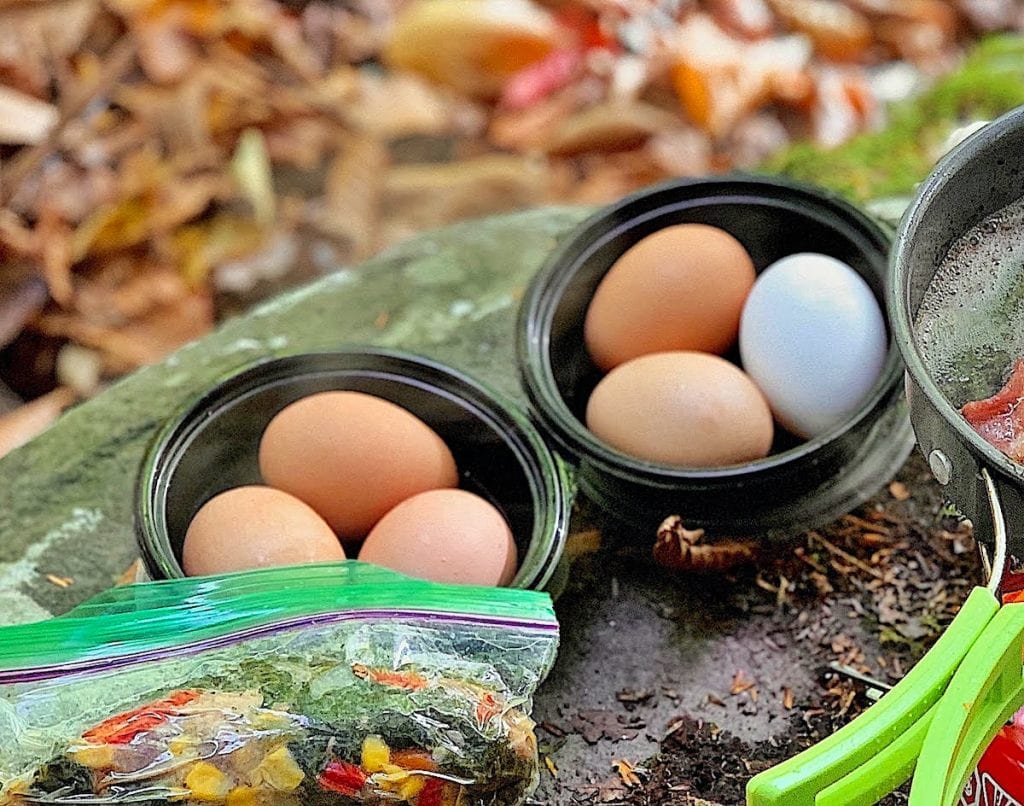
When it comes to packaging, usually I opt for the protective & space-saving Ziploc bags. For the eggs, I take the extra step of putting one or a few of them into a small food container with a cover, as photographed above. Those are perfect—they were containers for sides/mashed potatoes from KFC!
Ramen can be both a simple and a premium meal at the same time. It’s just a matter of what works for you.
Ramen Ingredients:
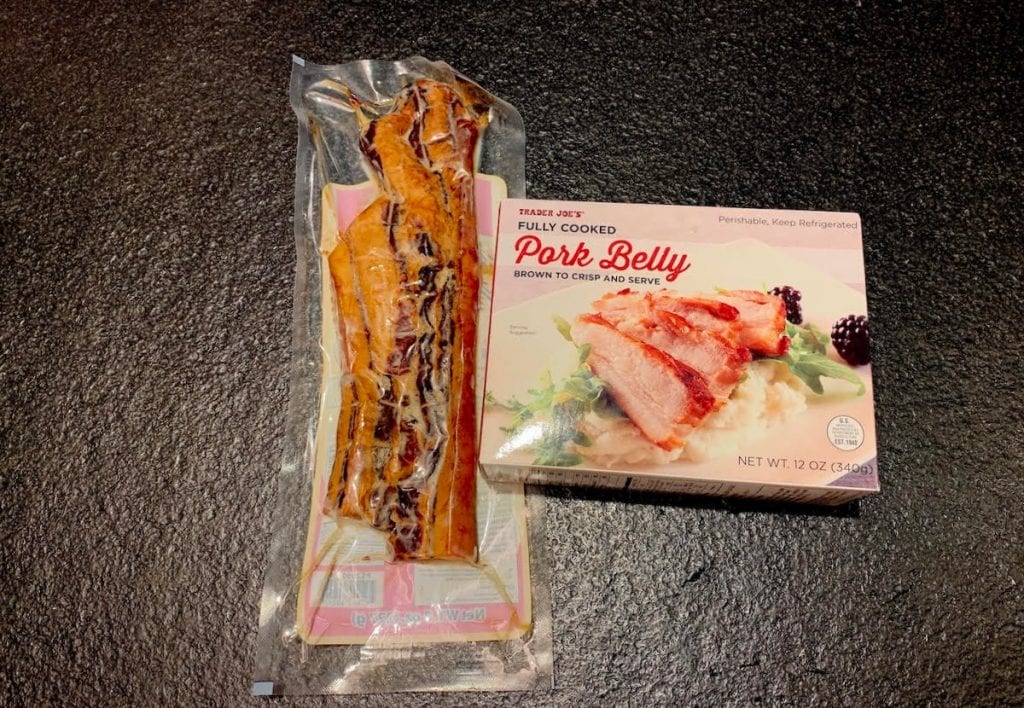
- instant noodle pack that comes with a seasoning packet
- vegetable of your choosing, sliced
- ideas include bok choy, leafy green, bell pepper, grape tomatoes, avocado, or even leftover cooked vegetables you may have around
- protein of your choosing, sliced
- ideas include cured/pre-cooked pork belly, sausage, cured meat, pre-cooked chicken strips in the refrigerated section, canned fish, canned chicken, wheat gluten, firm tofu
- an egg
- soft-boiled ahead & de-shelled, OR raw in its shell
- or more veggies to substitute!
- optional: scallions, sliced
Ramen Directions:
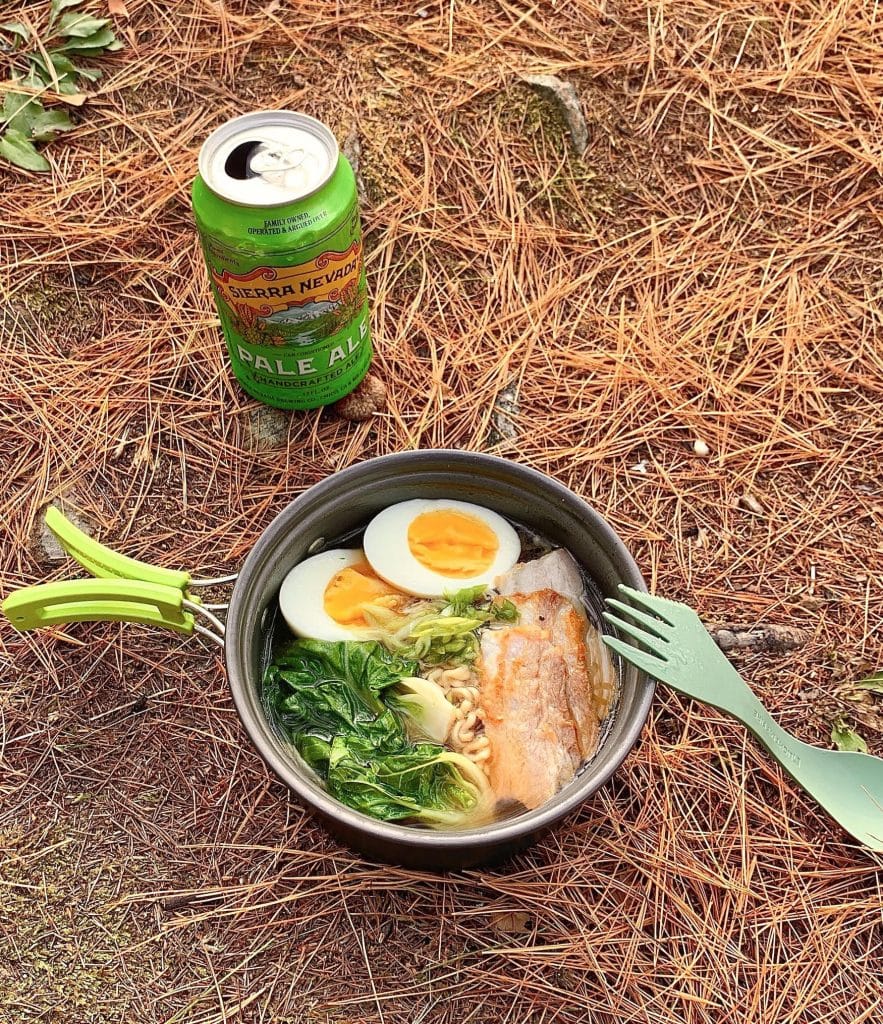
- If you opt for something like Trader Joe’s cooked pork belly, you can brown it at home by searing in the pan, or sear the ⅓”-thick slices onsite just before the ramen. Put prepared slices aside.
- Boil water in a small pot.
- If handling an uncooked egg, now is the time to simmer it whole.
- 7½-8 minutes for soft-boiled
- 10-12 minutes for hard boiled
- After boiling the egg, remove it and put it aside.
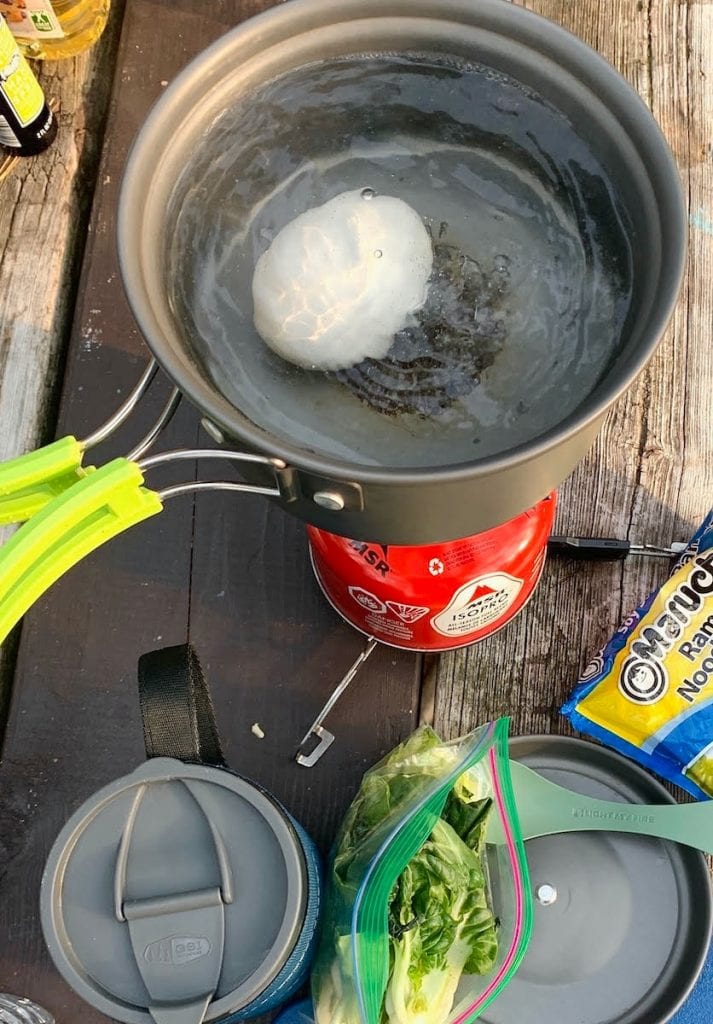
- Add seasoning packet to the hot water. Stir, then add the noodles. Follow the noodle pack for cooking times. Most instruct 3-5 minutes.
- While the noodles are simmering, remove the shell from the boiled egg, then cut the egg in half.
- In the last 2 minutes of cooking the noodles, add your protein & vegetables. You may have to increase the heat of the gas stove to get the water simmering again, and add a little more cooking time accordingly.
- After cooking time is completed, turn off the heat and rearrange the protein & veggies if you’d like. Then add the halved egg and sliced scallions on top.
- You’re done! Enjoy your well-deserved ramen!
Packing Tips, Substitutions & Toppings
Ramen comes in all shapes and sizes, you can keep it minimal, or make it indulgent!
The Noodles
- You can find instant noodles just about anywhere for 24-69¢ per individual pack. Check the ingredients list for any allergy/dietary concerns.
- For those who have Celiac disease and cannot consume wheat, you can substitute with rice noodles or even with this Rice Ramen! You can find a variety of rice noodles at Asian supermarkets or this particular brand at stores like Whole Foods and Target. Just be aware that Rice Ramen has a tendency to stick together and can overcook easily, so you may want to shorten the cooking time. In any case, these are excellent for ingredient adjustments!
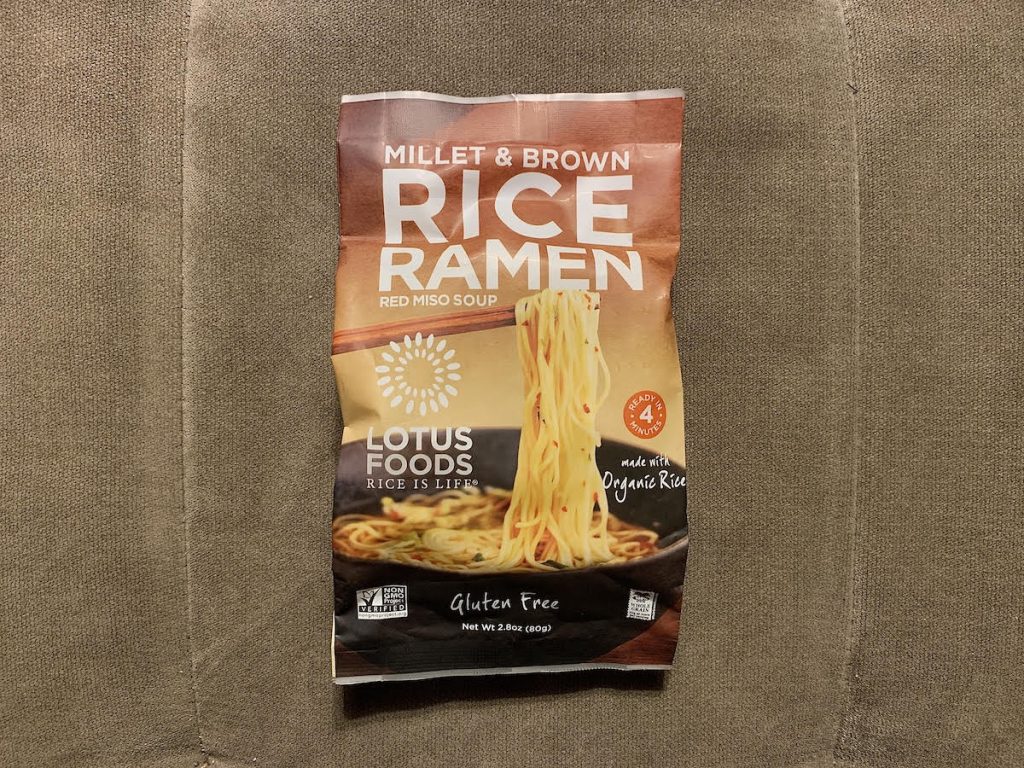
For Vegetarians
- For those who want to explore other routes for a vegetarian/vegan soup base, you can consider vegetarian bouillon cubes, which are affordable and easy to pack.
- Or try miso soup packets! Just be sure to double-check that the miso soup ingredients don’t include katsuobushi, which are dried tuna flakes. Some use shiitake or kombu instead, which are mushrooms and seaweed. Both lend to natural umami/savoriness!
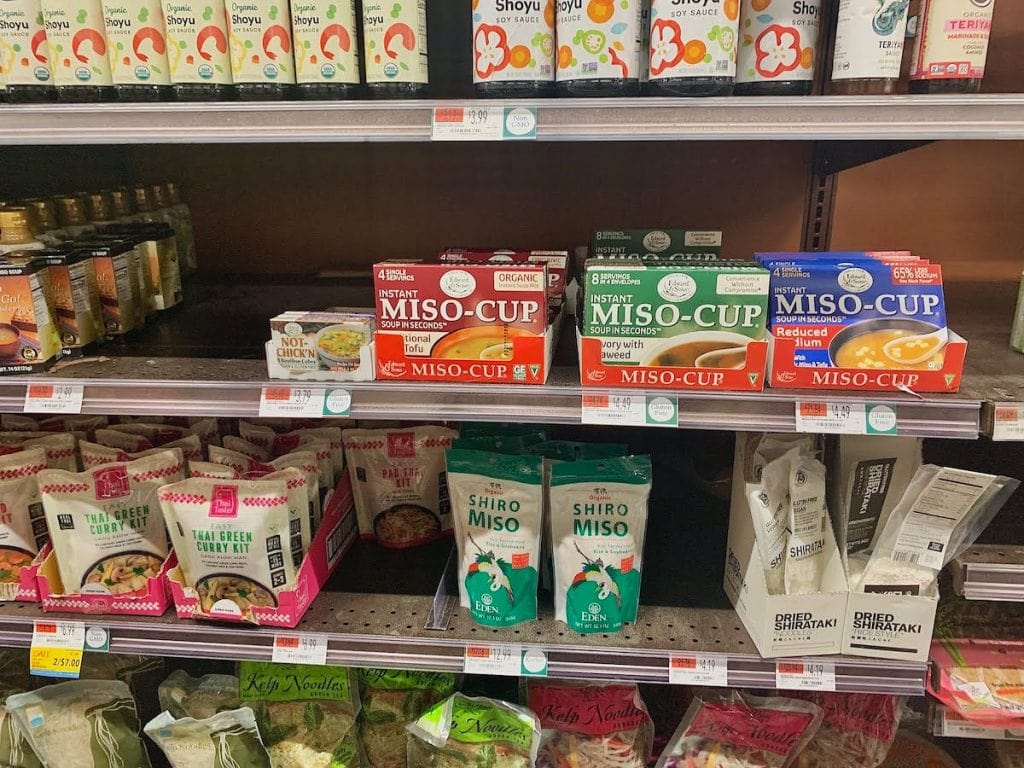
Toppings
In regards to a meat/fish protein topping, there are quite a few options.
- The easiest & temperature-safest would be the canned/packaged fish or chicken, as photographed above.
- If you want to take it to another level, you can find cooked chicken strips in refrigerated sections of the supermarket.
- If you really want to up your ramen, I recommend you try to find pork belly in the cured form or pre-cooked form (photographed above).The cured form can be found in Chinese supermarkets for about $6. Slice that good stuff up at an angle to increase the surface area. You’re in for a treat when those slices are simmered with the ramen soup — flavor complexities all around!The pre-cooked form can be found at Trader Joe’s for about $6. It comes as a pale pork belly block that you have to slice & sear yourself. But rest assured that it’s SO WORTH IT. Slice them relatively thick at about ⅓” since they’ll shrink down as the fat renders. If you’re even slightly considering this pork belly, I’m telling you to just do it. You’ll thank me later.
Whatever direction you decide to go in, that outdoors ramen will indisputably give you good fuel to continue your adventures. As my friend, Lance, would say, “Eating ramen is like getting an inside hug.” After covering some distance on your bike or on your feet, something so nourishing sounds so right.

